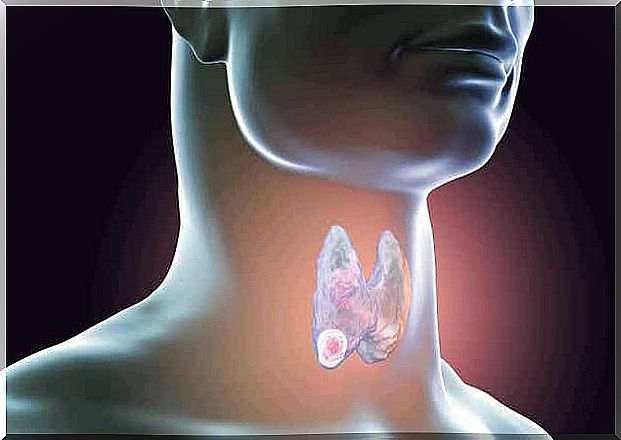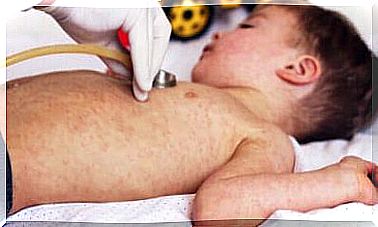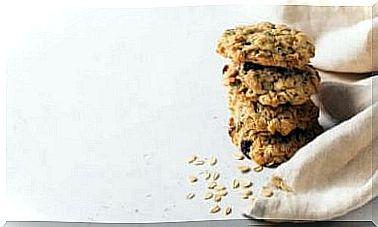Everything You Need To Know About Thyroid Biopsy

Thyroid biopsy is a procedure that is very widely used today. It allows experts to take a sample of the thyroid gland and analyze the sample in the laboratory. The important thing to know about thyroid biopsy is that it allows your doctor to rule out or diagnose many diseases, such as cancer.
The biopsy can be performed by different methods. The test piece is most commonly taken using a thin needle, but other methods may also be helpful if it has been difficult to make a clear diagnosis.
Thanks to a thyroid biopsy, your doctor can prescribe a special treatment plan depending on the disease. In this article, we want to tell you everything you need to know about thyroid biopsy, as well as how to perform it and what it is used for.
What should you know about thyroid biopsy?
What does a thyroid biopsy consist of?
A thyroid biopsy is a procedure that can be used to diagnose diseases that affect this gland. The thyroid gland is located in the front of the neck, in front of the trachea. Its job is to produce hormones that play a significant role in controlling your metabolism.
In a thyroid biopsy, a specimen is taken from the thyroid tissue. The sample is then examined in a laboratory and analyzed using a microscope by experts.
A thyroid biopsy can be performed using a variety of methods. The most common way to take a biopsy is to use a thin needle. In such a case, the procedure is often performed at an outpatient clinic under local anesthesia.
However, other methods require general anesthesia and are somewhat more complex. Their goal is to remove specimens from nodules that appear in the thyroid tissue. Usually, the specimens are taken from those nodules that are palpable by hand through the skin.
As noted in RadiologyInfo , nodules are often more than a centimeter in diameter. In order to perform the specimen safely and more accurately, the physician will perform an ultrasound examination at the same time. It makes it easier to locate the exact location of the nodules, especially if the nodules are quite small.

Types of thyroid biopsy
The specimen can be taken from the thyroid gland using different methods. In general, there are two types of thyroid biopsy: puncture biopsy and open biopsy.
1. Puncture biopsy
Different caliber needles can be used in puncture biopsy. A specimen of thyroid can be taken using a thin needle, and this is the most common way to perform a thyroid biopsy . According to experts at the Mayo Clinic , doctors use a thin and hollow needle to get cells.
In connection with this puncture biopsy, an ultrasound examination is often performed at the same time to get the needle to hit the right place. This procedure can be performed in a hospital or doctor’s office. It takes about ten minutes and does not require general anesthesia as it is a minimally invasive test.
While taking the specimen, the patient should lie on their back while stretching their neck. The patient should remain still and immobile during the procedure, as any movement may interfere with the orientation of the needle.
A puncture biopsy can also be performed using a thicker needle. This allows the test piece to be taken up to the size of a grain of rice. It is important to take specimens from different nodules of the gland.
When the procedure is complete, the area is cleaned and a patch is applied to the injection sites. It is normal for injection sites to feel uncomfortable afterwards.
2. Open biopsy
A thyroid biopsy can also be performed surgically. In this case, sampling is called an open biopsy. In this case, a small incision is made in the neck, through which the nodule is removed or a specimen is taken, which is sent to the laboratory for examination.
In some cases, your doctor may remove a large part of your thyroid gland. Experts recommend this method if an accurate diagnosis has not been made with a puncture biopsy.
General anesthesia is required for surgery and the procedure is performed in the operating room. An open biopsy is a rarer procedure because it involves more risks. For example, it can increase the chance of inflammation, bleeding and scarring.
Why is a thyroid biopsy performed?
The purpose of a thyroid biopsy is to find out what causes the nodules in the gland. In most cases, they can be detected by a doctor before the procedure on a physical examination. In addition, the expert may have examined the nodules using ultrasound or scintigraphy.
Biopsy can be used to find out which cells make up nodules. This makes it possible to determine whether these are good or malignant nodules or whether they indicate cancer.
In addition, it is good to know that thyroid biopsy is a useful method for studying certain types of goiter. Goiter means enlargement of the thyroid gland.
How to prepare for a thyroid biopsy?
Before performing a biopsy, the physician should be aware of the patient’s medical history. It is good for the doctor to know if the patient is taking any medication or if they have any other illness. Before taking the biopsy, the doctor will examine the patient to locate the nodules.
Certain additional tests may be performed prior to sampling. These include taking a blood sample or having an ultrasound scan.
No special preparation is required for puncture biopsy. As this is an outpatient procedure without general anesthesia, the patient does not need to fast before the procedure.
If an open biopsy is performed on the patient, general anesthesia is necessary. Because this is a much more complex procedure, the doctor will give specific instructions to the patient. In this case, the patient should not drink or eat before the procedure. In addition, the patient should rest for several hours after the procedure.
Possible results of thyroid biopsy

Test specimens taken from the thyroid gland provide a wealth of information about the health status of the thyroid gland. After the sample is analyzed in the laboratory, the doctor makes a comprehensive report describing the various parameters.
First, the color, composition, and general appearance of the sample are described. The cells it contains are then described, both numerically and morphologically. According to the American Thyroid Association , the results of a thyroid biopsy may be as follows:
- Good quality. Most specimens produce this result. In this case, the nodules are formed by differentiated cells, without atypia. In the coming months, the situation will be monitored and no intervention is necessary.
- Suspected malignancy. Here, certain properties of the sample suggest malignancy, but they are not definitive.
- Poor quality. Detectable cancer cells have been found in the sample. The most common thyroid cancer is papillary thyroid cancer, which often requires surgery.
- Unspecified atypia. This is a result similar to suspected malignancy. Although worrying traits have been observed in the sample, they are also found to have traits suggestive of good quality. If in doubt, it is a good idea to perform the biopsy again.
- Diagnosis cannot be made. When an accurate diagnosis cannot be made due to a deficient cell sample.
Biopsy plays a vital role in detecting cancer
Finally, it is good to remember that thyroid biopsy is a commonly used test to diagnose thyroid cancer. In addition to revealing potential malignant cells, it can also be used to identify the type of tumor.
In this way, it is possible to determine an appropriate treatment protocol depending on the disease in question. Usually, a thyroid biopsy is performed at an outpatient clinic and involves very few complications.









